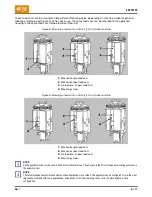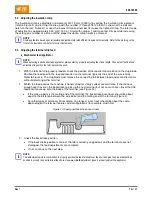
408-10390
Rev
T
8
of 25
2.3.
Applicator with servo feed system
With this applicator, the wire crimp height and terminal feed are accomplished by the AMP-O-LECTRIC III
servo terminator or any machine that incorporates the TE Connectivity precision controller. Refer to
NOTE
Some applicators do not work with the standard feed pawl in the feeder. In these cases, a special feed pawl must be used. If
originally ordered with the servo feed, the applicator is shipped with the special feed pawl already mounted.
Each servo feed applicator comes equipped with a data chip that is part of the servo feeder latch plate (see
Figure 3). For a complete description of the data chip, refer to
. This device allows the storage of key
operating parameters that allow easy setup between terminals. It also contains reference data that can be
useful for other machine setups and crimp inspection.
Batteries Directive 2006/66/EC
introduces new requirements from September 2008 concerning removability of
batteries from waste equipment in EU Member States. To comply with this Directive, this device is designed to
allow the data chip to be easily removed by the end-user when it must be replaced. Always dispose of the old
data chip in an environmentally responsible way in accordance with local waste regulations. Contact local
authority for battery recycling locations.
The servo feed applicator works in conjunction with the AMPOMATOR
™
III servo terminator (or any machine
that incorporates the TE precision controller) to form a complete system that allows setup and operation. The
information on the data chip is listed in the three separate groups:
Applicator data
Terminal data
Maintenance data
A significant amount of the data is reference data to aid in the setup of the machine and inspection of the final
crimp.
2.4.
Applicator with non-servo feed system
As with the data chip on the servo feed latch plate, optional data chip kit PN 2161326-[ ] also allows storage for
key operating parameters and contains reference data that can be useful for other machine setup and crimp
inspection. It requires compatible terminating equipment. For complete description of the data chip, refer to
2.5.
Applicator with non-adjust head
With this applicator, all wire crimp height adjustments are made by the machine. At the factory, the applicator's
non-adjust head is shimmed so that the applicator crimps its assigned terminal to the largest wire crimp height
found on the applicator log while the terminating machine is set to normal shut height.
NOTE
If using an applicator with a fine-adjust head on a machine with a self-adjusting wire crimp height feature, always set the fine-
adjust head to the largest wire crimp height called out on the applicator log.









































